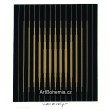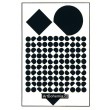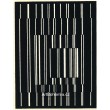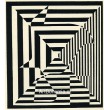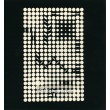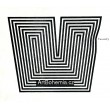Košík
0
x
Produkty
(prázdný)
Žádné díla
Bude determinováno
Dopravné a balné
0 Kč
Celkem
Produkt byl úspěšně přidán do nákupního košíku
Počet
Celkem
0 ks zboží.
1 dílo v košíku.
Za díla:
Doručení a balné:
Bude determinováno
Celkem
Kategorie
- grafiky/tisky
- obrazy
- kresby
- plakáty
- fotografie
- exlibris
- bibliofilie
- knihy/katalogy
- starožitnosti
- sochy/plastiky
- sklo
-
Hnutí
- abstrakce
- art-deco
- čs.avantgarda/moderna
- expresionismus
- fauvismus
- impresionismus
- kubismus
- naivní umění
- op-art
- poetismus
- pop-art
- realismus
- secese
- sociální kritika
- soudobá tvorba
- surrealismus
- světová avantgarda/moderna
- Škola prof. Albína Brunovského
- Škola prof. Zdeňka Sklenáře
- Škola prof.Julia Mařáka - mařákovci
- Žánr
- Zprávy/NEWS
- Doporučujeme
-

La Comédie Humaine (108) 10.1.1954 XII
242 Kč -80% 1 210 Kč
Hnutí
- abstrakce
- art-deco
- čs.avantgarda/moderna
- expresionismus
- fauvismus
- impresionismus
- kubismus
- naivní umění
- op-art
- poetismus
- pop-art
- realismus
- secese
- sociální kritika
- soudobá tvorba
- surrealismus
- světová avantgarda/moderna
- Škola prof. Albína Brunovského
- Škola prof. Zdeňka Sklenáře
- Škola prof.Julia Mařáka - mařákovci
Žánr
NEJŽÁDANĚJŠÍ UMĚLCI
- Anderle Jiří
- Augustovič Peter
- Benca Igor
- Beneš Karel
- Bím Tomáš
- Born Adolf
- Brun Robert
- Brunovský Albín
- Boštík Václav
- Bouda Cyril
- Bouda Jiří
- Braque Georges
- Brázda Jiří
- Buffet Bernard
- Cézanne Paul
- Čapek Josef
- Čápová Hana
- Dalí Salvador
- Demel Karel
- Dudek Josef
- Dufy Raoul
- Effel Jean
- Felix Karol
- Filla Emil
- Giacometti Alberto
- Grosz George
- Chagall Marc
- Istler Josef
- Janeček Ota
- Jiřincová Ludmila
- Kandinsky Wassily
- Kĺúčik Peter
- Komárek Vladimír
- Kulhánek Oldřich
- Kupka František
- Lada Josef
- Lhoták Kamil
- Matisse Henri
- Miró Joan
- Mucha Alfons
- Muzika František
- Picasso Pablo
- Pileček Jindřich
- Reynek Bohuslav
- Sukdolák Pavel
- Suchánek Vladimír
- Svolinský Karel
- Šíma Josef
- Špála Václav
- Švabinský Max
- Švengsbír Jiří
- Tichý František
- Toulouse-Lautrec Henri de
- Toyen
- Trnka Jiří
- Váchal Josef
- Vik Karel
- Warhol Andy
- Zábranský Vlastimil
- Zoubek Olbram
- Zrzavý Jan
Seznam děl umělce Vasarely Victor
1906 Born April 9 in Pécs, Hungary
1925 - 1927 Studies medicine at the University of Budapest. Although he decides to abandon his medical studies after two years, scientific methodology and objectivity should later influence his approach to art.
1906 Born April 9 in Pécs, Hungary
1925 - 1927 Studies medicine at the University of Budapest. Although he decides to abandon his medical studies after two years, scientific methodology and objectivity should later influence his approach to art.
1927 - 1929 Studies art at the Podolini-Volkmann Academy in Budapest.
1929 Enrols at Alexander Bortnyiks Mühely Academy, widely recognised as the centre of Bauhaus studies in Budapest.
1930 - 1934 Moves to Paris, where he works as a graphic artist for various agencies, including Havas, and for the renowned printer Draeger. Begins his Zebra studies and engages in his first optical experiments. Marries Claire Spinner in 1931. Their first child André is born the same year. A second son, Jean-Pierre, is born in 1934.
1935 - 1945 Assembles an important body of graphic works , developing the aesthetic foundations for his plastic language. In 1944, inaugurates the Galerie Denise René in Paris with a solo-exhibition, and in 1945, participates for the first time in the Salon des Surindépendants.
1946 - 1950 Moves decidedly towards Constructivist and geometric abstract art, inspired by artists such as Malevitch, Moholy-Nagy and Walter Gropius. His vacations at Gordes and Belle-Isle from 1947 onwards play an important role in inspiring this shift away from figurative representation. Publishes his first edition of prints. Exhibits at the Salon des Surindépendants (1946), the Salon des Réalités Nouvelles (1947) and Galerie Denis René in Paris (1948).
1951 - 1959 Works predominantly in black and white. Develops and defines the visual elements of Op Art, the movement with which his name has become inextricably linked. In 1955 publishes his Yellow Manifesto and receives the Critics Award in Brussels and the Gold Medal at the Milan Triennial. Completes a series of murals for the University of Caracas in Venezuela, as well as several architectural integrations such as Hommage ŕ Malevitch. Participates in numerous exhibitions such as Le Mouvement at the Galerie Denise René (1955), 50 Ans dArt Moderne at the Palais International des Beaux-Arts in Brussels (1958), and Inaugural Selection at the Solomon R. Guggenheim Museum in New York (1959). Has solo exhibitions at the Buenos Aires and Caracas museums of art (1958/59) and at Galerie Der Spiegel in Cologne (1959).
1960 - 1965 Receives the International Guggenheim Award in New York (1964), the Grand Prix de la Gravure in Ljubljana in Slovenia (1965) as well as the Grand Prize at the VIII Art Biennale of Săo Paolo (1965). Also awarded the Chevalier de lOrdre des Arts et Lettres in Paris (1965). Participates in many group exhibitions, incuding Documenta III in Kassel, Germany (1964) and, most notably, The Responsive Eye at the Museum of Modern Art in New York (1965). Also has numerous solo exhibitions, including shows at the Musée des Arts Décoratifs in Paris (1963), the Pace Gallery in New York (1964), the Palais des Beaux-Arts in Brussels (1965) and the Kunsthalle in Bern in Switzerland (1965).
1966 - 1970 Completes several architectural projects, including one for the French pavilion at the World Expo in Montreal (1967). Also completes two films Les Multiples and Précinetisme. Interviews of the artist by Jean-Louis Ferrier are published. Awarded Chevalier de lOrdre de la Légion dHonneur (1970). Numerous group exhibitions, among them Lumičre et Mouvement at the Musée dArt Moderne de la Ville in Paris (1967) and 10 Ans dArt vivant, 1955-65 at the Fondation Maeght (1968) in Saint Paul-de-Vence in France, as well as solo exhibitions at the Sidney Janis Gallery in New York (1966 and 1968), Galerie Denise René in Paris (1969) and the Museum of Fine Arts in Budapest (1969).
1971 - 1975 Inauguration of the Vasarely Museum in Gordes in France (1971). Publishes the four volumes of Plasti-cité and receives the International Art Book Award for two of the volumes in 1971 and 1975. Solo exhibitions at the Galerie Denise René (1972) and Sidney Jannis Gallery (1972). Designs the set for the Racine Opera Bérenice, performed in Hungary.
1976 - 1982 Inauguration of the Vasarely Foundation in Aix-en-Provence (1976) and the Vasarely Museum in his hometown of Pécs (1978). Solo exhibitions at the Caracas Museum of Contemporary Art (1977) and the Phoenix Art Museum (1979). Creates 154 prints that are transported into space aboard the Soyuz 7 by a French-Soviet team of cosmonauts .
1983 - 1990 Named Honorary Citizen of the City of New York and delivers a series of lectures in the United States. In France, Vasarely is named Officier de lOrdre des Arts et des Lettres (1985) and promoted to the rank of Grand Officier de l'Ordre du Mérite in France (1990). Inauguration of the Vasarely Museum at the Zichy Palace in Budapest (1987).
1997 Dies March 15 in Paris.
Selected Exhibitions
2006 The Expanded Eye, Kunsthaus Zurich, Switzerland
2005 The Kinetic Eye: Optical and Kinetic Art, 1950-1975, 13 May 25 September, Museum of Modern and Contemporary Art, Strasbourg, France
2005 Victor Vasarely in black and white, Robert Sandelson, London
2004 Victor Vasarely: Black and White paintings from 1950s, 16 October 13 November 2004, Robert Miller Gallery, New York
2004 Victor Vasarely: Founder of Op Art, Naples Museum of Art, Naples, Florida
2004 Victor Vasarely Parcours 1930-1980, La Fondation Demeures du Nord, Lille
2003 Victor Vasarely, Robert Sandelson, London
2001 Vasarely Inconnu, Palais Bénédictine, Fécamp
2000 Vasarely, Fundacion Juan March, Madrid, Spain
1998 Vasarely Geometrie, Abstraktion, Rhythmus. Die Fünfziger Jahre, Ulmer Museum, Ulm
1997 - 1998 Vasarely Erfinder der Op-Art, Wilhelm-Hack-Museum, Ludwigshafen, Kunstverein Wolfsburg and Joseph Albers Museum, Bottrop
1996 - 1997 Vasarely: Hommages, Musée Communal des Beaux-Arts, Charleroi and Fondation Vasarely, Aix-en-Provence
1995 Victor Vasarely 50 Years of Creation, Musée Olympique, Lausanne
1992 Le Mouvement, Fondation Maeght, St-Paul-de-Vence
1992 Retrospective, Kunstforum Vienna, Austria
1987 Vasarely, Esterhazy Castle, Eisenstadt
1987 Victor Vasarely, Okresné Museum, Prague
1986 Vasarely, National Museum of Fine Arts, Algiers
1986 Galerie der Stadt Esslingen am Neckar, Germany
1980 The Art Of Victor Vasarely, Midland Center of Arts, Midland, Michigan
1979 The Optic Art of Vasarely, Phoenix Art Museum, Phoenix, Arizona
1977 Museo de Bellas Artes, Caracas
1975 Cultural Centre, Modena, Italy
1972 Exposition de sérigraphies et de multiples, Philadelphia Art Museum
1972 Sidney Janis Gallery, New York
1972 Galerie Denise René, Paris
1970 From Renoir to Vasarely, Salon dAutomne, Grand-Palais, Paris
1969 Museum of Fine Arts, Budapest, Hungary
1969 Folklore Planétaire, Galerie Denis René, Paris
1968 Vasarely, Sidney Janis Gallery, New York
1968 10 Ans dArt Vivant, 1955-65, Fondation Maeght, St Paul-de-Vence, France
1967 Lumičre et Mouvement, Musée dArt Moderne de la Ville, Paris
1967 Multiples, Galerie Denise René, Paris
1966 Sidney Janis Gallery, New York
1965 The Responsive Eye, Museum of Modern Art, New York
1965 Kunsthalle, Berne, Switzerland
1964 Documenta III, Kassel, Germany
1964 Vasarely et lArt Social, Académie des Beaux-Arts, Paris
1964 Pace Gallery, New York
1963 L'Unite Plastique, Musée des Arts Décoratifs, Paris
1963 Taft Museum, Cincinatti
1959 Galerie Der Spiegel, Cologne
1959 Museo de Bellas Artes, Caracas
1959 Inaugural Selection, Solomon R. Guggenheim Museum, New York
1958 50 Ans dArt Moderne, Palais International des Beaux-Arts,Brussels
1958 Museo Nacional de Bellas Artes, Buenos Aires
1955 Le Mouvement, Galerie Denise René, Paris
1955 Galerie Der Spiegel, Cologne
1955 Palais de Beaux-Arts, Bruxelles; APIAW, Liege
1950 Galerie Arne Bruun Rasmussen, Copenhague
1948 Tendences de lArt Abstrait, Galerie Denise René, Paris
1944 Galerie Denise René, Paris
1930 Galerie Kovacs Akos, Budapest In: http://www.artnet.com/artist/17122/victor-vasarely.html
Vasarély, Victor (1908- ), French painter, sculptor, and graphic artist of Hungarian birth, who is recognized not only as the creator of Op Art but of one of the most successful Op Artists.
He was born in Pécs and, forsaking the medical studies he had begun in Budapest, attended the Polodini-Volkmann Academy in 1927, then (1928-1929) the Mühely Academy (the “Bauhaus of Budapest”), where Laszló Moholy-Nagy was one of his teachers and where he encountered the work of Mondrian, Malevich, Kandinsky, and Gropius. In 1930, he settled in Paris, where he initially worked as a commercial graphic artist. He acquired French nationality in 1959.
Vasarély's interest in geometrical abstractions, and the potential of using them to produce striking visual effects, began in the late 1940s. The basic components were squares, circles, and triangles, and horizontal and vertical parallel lines; by drawing lines at varying distances from one another and introducing undulations, Vasarély created the illusion of three-dimensional space. He later introduced vibrant colours, which further enhanced the optical illusion. In their fully developed form, Vasarély's geometrical abstractions produce mesmerizing, almost hallucinatory effects that entrap the eye and often create a very immediate sensation of movement. For example, VEGA PER (1969, Honolulu Academy of Arts) is a canvas covered with an overall pattern of red and green dots. By the manipulation of foreshortening and perspectival effects, the centre of the picture plane appears to balloon out at the viewer, in the manner of a net into which a football has been thrust. Other compositions lead the eye headlong into illusory tunnels or corridors formed by squares that “disappear” in the “depths” of the canvas. Vasarély called this technique “cinétisme”.
Vasarély's paintings are some of the most powerful examples of Op Art. He was very influential on younger Op Artists and was instrumental in forming the Groupe de Recherche d'Art Visuel in Paris. A large collection of his work is on display in the Musée Vasarély, which the artist opened at the Château de Gordes, near Aix-en-Provence, in 1970. He also worked as a sculptor, and collaborated with architects, producing a mural and an aluminium relief for the University of Caracas (1967) and contributing to the design of the French pavilion at Expo '67 in Montreal.
In: MS Encarta
Zobrazit
1925 - 1927 Studies medicine at the University of Budapest. Although he decides to abandon his medical studies after two years, scientific methodology and objectivity should later influence his approach to art.
1927 - 1929 Studies art at the Podolini-Volkmann Academy in Budapest.
1929 Enrols at Alexander Bortnyiks Mühely Academy, widely recognised as the centre of Bauhaus studies in Budapest.
1930 - 1934 Moves to Paris, where he works as a graphic artist for various agencies, including Havas, and for the renowned printer Draeger. Begins his Zebra studies and engages in his first optical experiments. Marries Claire Spinner in 1931. Their first child André is born the same year. A second son, Jean-Pierre, is born in 1934.
1935 - 1945 Assembles an important body of graphic works , developing the aesthetic foundations for his plastic language. In 1944, inaugurates the Galerie Denise René in Paris with a solo-exhibition, and in 1945, participates for the first time in the Salon des Surindépendants.
1946 - 1950 Moves decidedly towards Constructivist and geometric abstract art, inspired by artists such as Malevitch, Moholy-Nagy and Walter Gropius. His vacations at Gordes and Belle-Isle from 1947 onwards play an important role in inspiring this shift away from figurative representation. Publishes his first edition of prints. Exhibits at the Salon des Surindépendants (1946), the Salon des Réalités Nouvelles (1947) and Galerie Denis René in Paris (1948).
1951 - 1959 Works predominantly in black and white. Develops and defines the visual elements of Op Art, the movement with which his name has become inextricably linked. In 1955 publishes his Yellow Manifesto and receives the Critics Award in Brussels and the Gold Medal at the Milan Triennial. Completes a series of murals for the University of Caracas in Venezuela, as well as several architectural integrations such as Hommage ŕ Malevitch. Participates in numerous exhibitions such as Le Mouvement at the Galerie Denise René (1955), 50 Ans dArt Moderne at the Palais International des Beaux-Arts in Brussels (1958), and Inaugural Selection at the Solomon R. Guggenheim Museum in New York (1959). Has solo exhibitions at the Buenos Aires and Caracas museums of art (1958/59) and at Galerie Der Spiegel in Cologne (1959).
1960 - 1965 Receives the International Guggenheim Award in New York (1964), the Grand Prix de la Gravure in Ljubljana in Slovenia (1965) as well as the Grand Prize at the VIII Art Biennale of Săo Paolo (1965). Also awarded the Chevalier de lOrdre des Arts et Lettres in Paris (1965). Participates in many group exhibitions, incuding Documenta III in Kassel, Germany (1964) and, most notably, The Responsive Eye at the Museum of Modern Art in New York (1965). Also has numerous solo exhibitions, including shows at the Musée des Arts Décoratifs in Paris (1963), the Pace Gallery in New York (1964), the Palais des Beaux-Arts in Brussels (1965) and the Kunsthalle in Bern in Switzerland (1965).
1966 - 1970 Completes several architectural projects, including one for the French pavilion at the World Expo in Montreal (1967). Also completes two films Les Multiples and Précinetisme. Interviews of the artist by Jean-Louis Ferrier are published. Awarded Chevalier de lOrdre de la Légion dHonneur (1970). Numerous group exhibitions, among them Lumičre et Mouvement at the Musée dArt Moderne de la Ville in Paris (1967) and 10 Ans dArt vivant, 1955-65 at the Fondation Maeght (1968) in Saint Paul-de-Vence in France, as well as solo exhibitions at the Sidney Janis Gallery in New York (1966 and 1968), Galerie Denise René in Paris (1969) and the Museum of Fine Arts in Budapest (1969).
1971 - 1975 Inauguration of the Vasarely Museum in Gordes in France (1971). Publishes the four volumes of Plasti-cité and receives the International Art Book Award for two of the volumes in 1971 and 1975. Solo exhibitions at the Galerie Denise René (1972) and Sidney Jannis Gallery (1972). Designs the set for the Racine Opera Bérenice, performed in Hungary.
1976 - 1982 Inauguration of the Vasarely Foundation in Aix-en-Provence (1976) and the Vasarely Museum in his hometown of Pécs (1978). Solo exhibitions at the Caracas Museum of Contemporary Art (1977) and the Phoenix Art Museum (1979). Creates 154 prints that are transported into space aboard the Soyuz 7 by a French-Soviet team of cosmonauts .
1983 - 1990 Named Honorary Citizen of the City of New York and delivers a series of lectures in the United States. In France, Vasarely is named Officier de lOrdre des Arts et des Lettres (1985) and promoted to the rank of Grand Officier de l'Ordre du Mérite in France (1990). Inauguration of the Vasarely Museum at the Zichy Palace in Budapest (1987).
1997 Dies March 15 in Paris.
Selected Exhibitions
2006 The Expanded Eye, Kunsthaus Zurich, Switzerland
2005 The Kinetic Eye: Optical and Kinetic Art, 1950-1975, 13 May 25 September, Museum of Modern and Contemporary Art, Strasbourg, France
2005 Victor Vasarely in black and white, Robert Sandelson, London
2004 Victor Vasarely: Black and White paintings from 1950s, 16 October 13 November 2004, Robert Miller Gallery, New York
2004 Victor Vasarely: Founder of Op Art, Naples Museum of Art, Naples, Florida
2004 Victor Vasarely Parcours 1930-1980, La Fondation Demeures du Nord, Lille
2003 Victor Vasarely, Robert Sandelson, London
2001 Vasarely Inconnu, Palais Bénédictine, Fécamp
2000 Vasarely, Fundacion Juan March, Madrid, Spain
1998 Vasarely Geometrie, Abstraktion, Rhythmus. Die Fünfziger Jahre, Ulmer Museum, Ulm
1997 - 1998 Vasarely Erfinder der Op-Art, Wilhelm-Hack-Museum, Ludwigshafen, Kunstverein Wolfsburg and Joseph Albers Museum, Bottrop
1996 - 1997 Vasarely: Hommages, Musée Communal des Beaux-Arts, Charleroi and Fondation Vasarely, Aix-en-Provence
1995 Victor Vasarely 50 Years of Creation, Musée Olympique, Lausanne
1992 Le Mouvement, Fondation Maeght, St-Paul-de-Vence
1992 Retrospective, Kunstforum Vienna, Austria
1987 Vasarely, Esterhazy Castle, Eisenstadt
1987 Victor Vasarely, Okresné Museum, Prague
1986 Vasarely, National Museum of Fine Arts, Algiers
1986 Galerie der Stadt Esslingen am Neckar, Germany
1980 The Art Of Victor Vasarely, Midland Center of Arts, Midland, Michigan
1979 The Optic Art of Vasarely, Phoenix Art Museum, Phoenix, Arizona
1977 Museo de Bellas Artes, Caracas
1975 Cultural Centre, Modena, Italy
1972 Exposition de sérigraphies et de multiples, Philadelphia Art Museum
1972 Sidney Janis Gallery, New York
1972 Galerie Denise René, Paris
1970 From Renoir to Vasarely, Salon dAutomne, Grand-Palais, Paris
1969 Museum of Fine Arts, Budapest, Hungary
1969 Folklore Planétaire, Galerie Denis René, Paris
1968 Vasarely, Sidney Janis Gallery, New York
1968 10 Ans dArt Vivant, 1955-65, Fondation Maeght, St Paul-de-Vence, France
1967 Lumičre et Mouvement, Musée dArt Moderne de la Ville, Paris
1967 Multiples, Galerie Denise René, Paris
1966 Sidney Janis Gallery, New York
1965 The Responsive Eye, Museum of Modern Art, New York
1965 Kunsthalle, Berne, Switzerland
1964 Documenta III, Kassel, Germany
1964 Vasarely et lArt Social, Académie des Beaux-Arts, Paris
1964 Pace Gallery, New York
1963 L'Unite Plastique, Musée des Arts Décoratifs, Paris
1963 Taft Museum, Cincinatti
1959 Galerie Der Spiegel, Cologne
1959 Museo de Bellas Artes, Caracas
1959 Inaugural Selection, Solomon R. Guggenheim Museum, New York
1958 50 Ans dArt Moderne, Palais International des Beaux-Arts,Brussels
1958 Museo Nacional de Bellas Artes, Buenos Aires
1955 Le Mouvement, Galerie Denise René, Paris
1955 Galerie Der Spiegel, Cologne
1955 Palais de Beaux-Arts, Bruxelles; APIAW, Liege
1950 Galerie Arne Bruun Rasmussen, Copenhague
1948 Tendences de lArt Abstrait, Galerie Denise René, Paris
1944 Galerie Denise René, Paris
1930 Galerie Kovacs Akos, Budapest In: http://www.artnet.com/artist/17122/victor-vasarely.html
Vasarély, Victor (1908- ), French painter, sculptor, and graphic artist of Hungarian birth, who is recognized not only as the creator of Op Art but of one of the most successful Op Artists.
He was born in Pécs and, forsaking the medical studies he had begun in Budapest, attended the Polodini-Volkmann Academy in 1927, then (1928-1929) the Mühely Academy (the “Bauhaus of Budapest”), where Laszló Moholy-Nagy was one of his teachers and where he encountered the work of Mondrian, Malevich, Kandinsky, and Gropius. In 1930, he settled in Paris, where he initially worked as a commercial graphic artist. He acquired French nationality in 1959.
Vasarély's interest in geometrical abstractions, and the potential of using them to produce striking visual effects, began in the late 1940s. The basic components were squares, circles, and triangles, and horizontal and vertical parallel lines; by drawing lines at varying distances from one another and introducing undulations, Vasarély created the illusion of three-dimensional space. He later introduced vibrant colours, which further enhanced the optical illusion. In their fully developed form, Vasarély's geometrical abstractions produce mesmerizing, almost hallucinatory effects that entrap the eye and often create a very immediate sensation of movement. For example, VEGA PER (1969, Honolulu Academy of Arts) is a canvas covered with an overall pattern of red and green dots. By the manipulation of foreshortening and perspectival effects, the centre of the picture plane appears to balloon out at the viewer, in the manner of a net into which a football has been thrust. Other compositions lead the eye headlong into illusory tunnels or corridors formed by squares that “disappear” in the “depths” of the canvas. Vasarély called this technique “cinétisme”.
Vasarély's paintings are some of the most powerful examples of Op Art. He was very influential on younger Op Artists and was instrumental in forming the Groupe de Recherche d'Art Visuel in Paris. A large collection of his work is on display in the Musée Vasarély, which the artist opened at the Château de Gordes, near Aix-en-Provence, in 1970. He also worked as a sculptor, and collaborated with architects, producing a mural and an aluminium relief for the University of Caracas (1967) and contributing to the design of the French pavilion at Expo '67 in Montreal.
In: MS Encarta
Fotografie
 |  |  |
Zobrazeno 1 – 11 z 11 položek
Zobrazeno 1 – 11 z 11 položek



